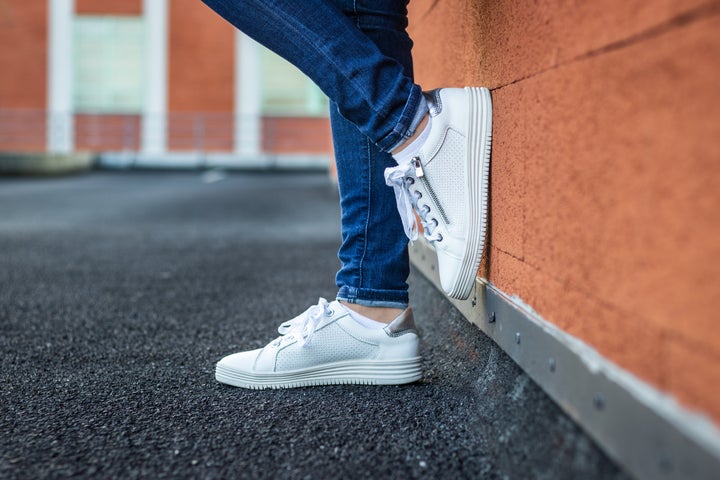
You’ve tried the meat-free meals and switched up your beauty routine, so is it time to address your wardrobe, too?
Vegan leather has hit the mainstream in 2020, with the likes of New Look and Aldi launching vegan leather products, hot off the heals of higher-end brands like Stella McCartney and Matt & Nat. Not to mention your trusty DM boots.
But should you switch to this alternative material if you’ve pledged to ditch animal by-products? And it is actually a more sustainable choice if you’re dipping your toe into veganism for the sake of the planet?
As with many environmental conundrums, there isn’t one clear answer, with pros and cons to both regular leather and vegan leather. What makes this subject even stickier, is that not all vegan leather is created equal, so ultimately it’s about finding products that best align with your priorities.
It’s not easy being green, so we’ve laid out what you need to know to make the right choice for you.
What is vegan leather?
Vegan leather is essentially faux leather – a product such as a bag, trainers or jacket that’s designed to look and feel like regular leather, without the use of animal by-products.
“There is a great variation in price and some alternatives are claimed to be much more sustainable than others,” explains Samantha Calvert, a spokesperson from the Vegan Society.
Some products listed as “vegan leather” are made from relatively new manufacturing processes that utilise natural materials. They might be made from Piñatex, for example, which is a natural textile made from pineapple leaf fibre, or Muskin, which is derived from mushrooms.
Other vegan leather products contain rubber and cork, while some are made entirely from polyurethane or polyester – two common types of plastic.
In other words, you might buy vegan leather to save the planet, only to unwittingly contribute to the mass production of more plastic.
But it’s complicated...

Even among companies that are rebranding plain old plastic as “vegan leather”, manufacturing processes vary. Some are using brand new plastic in these products, while others are using recycled plastic – and it’s not always easy to make this distinction from the labelling.
Climate activist and vegan Venetia La Manna believes the marketing around some vegan leather is “dubious”, adding: “If this clothing is harming the planet and therefore the animals in the long-run, I’d argue, what’s vegan about it?”
“Generally speaking, leather is more durable and will also eventually biodegrade. Plastic is going to outlive us all and could end up harming animals in the long run.”
But Calvert argues that despite the recent societal drive to ditch plastic, other materials – including regular leather – can be equally bad for the environment.
“When thinking about the environmental impact of leather, many people forget to factor in how much water and food the cows consume, how much land they take up, how much waste and methane they produce, and the amount of chemicals used in the tannery industry that harm its workers,” she says.
According to the Higg Materials Sustainability Index, created by the Sustainable Apparel Coalition, leather from cows is nearly three times as harmful to the environment as polyurethane-based vegan leather.
“The tanning of leather has been noted as the fifth largest pollution threat in the world, directly affecting 1.8 million people,” Calvert says.
“Just because something is made of plastic doesn’t make it the least environmentally friendly option; in fact, when you consider how much it takes to stop a piece of cow skin from decomposing, animal leather is right at the bottom of the sustainable materials list.”
So, what’s an eco-conscious consumer to do?
This is where your priorities come in; if you’re following a vegan lifestyle because animal welfare is young main concern, you may decide vegan leather is still a good option for you – even if it’s made from new plastic. But if the environment is of equal concern, you might decide to find a compromise.
La Manna identifies as a vegan and follows a vegan diet, but personally chooses to buy vintage (real) leather, rather than vegan leather.
“It’s a decision that divides the vegan community, and one that means some vegans would argue I’m no longer in a place to call myself vegan – which I totally understand,” she says. ”Ultimately, I’m vegan for planetary reasons as much as I am for ethical reasons, so my main goal when it comes to fashion and accessories is not to buy new.
“We are at peak ‘stuffocation’ and anything ‘new’ has gone through a process - be it in production, shipping, marketing, which adds to the burning of precious fossil fuels.”
If you do buy vegan leather, be sure to check the materials on the label to make an informed choice. While vegan leather made from natural materials tends to be more expensive, it could be worth saving up in order to help save the planet.